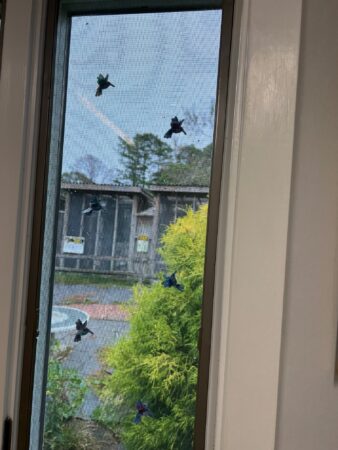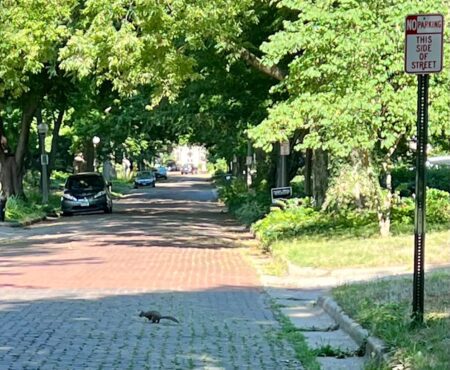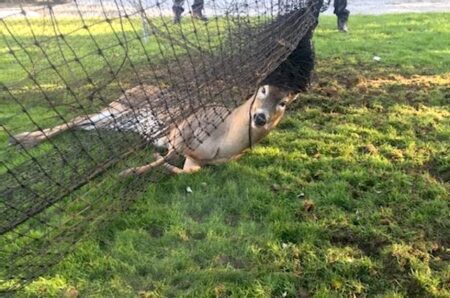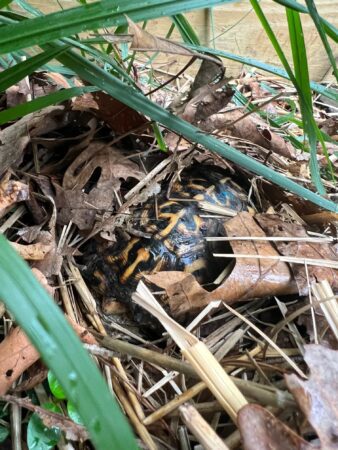Many will have noticed that with the shortening of days and cooler weather there is an increased activity among our wild neighbors. Small mammals that rely on food stores like chipmunks and squirrels are gathering everything they can get their little paws on, animals that hibernate are preparing their dens and burrows and many birds are on the move, flying to warmer locations. With this increased activity comes increased risk but the sense of urgency each animal feels to complete their seasonal tasks is rooted in the fact that it’s a matter of survival. We can help them by doing just a few simple things.
1. Decorate those windows! Birds are already migrating and some will fly thousands of miles before they reach their destination. During this migration there are many things that can go wrong and one common hazard is flying into windows which to birds look like open space. By putting decals or stickers on our windows we can warn birds of their presence and prevent collision.

These hummingbird decals decorate a window at the wildlife center.
2. Look both ways! People often say that squirrels have no street smarts and this is doubly true in the fall season when they are gathering their food stores. They are darting across the streets with their mouths full of treasures and they often don’t see the car barreling down on them until it’s too late. We can help by being extra vigilant drivers and keeping our eyes peeled for distracted wildlife that might cross our path.

This is an increasingly common sight as the weather gets cooler.
3. Don’t relocate! At the center we get many calls from people who want animals removed from their yards. The groundhog is one animal that is commonly “relocated”. This is often a death sentence to the animal being moved and that is especially true in the fall. Groundhogs are deep hibernators and rely on a carefully crafted burrow to survive the winter. If they are taken away from this home and left in a strange location they will slowly succumb to starvation and exposure.
4. Put away your nets and hammocks! Fall is mating season for deer and they are at increased risk of mishap during this time. Male deer often get their horns tangled in netting so it’s important to put away any soccer nets and hammocks that can cause problems. Garden netting is also a major issue for wildlife and should be removed wherever possible.

A deer stuck in a soccer net. Photo courtesy of The Broken Antler
- Leave the leaves! The leaves that fall on the ground are used as insulating material for many animals during the cold winter months. Squirrels will use leaves to build a nest (called a drey) and other mammals will use them to insulate their dens. Reptiles like the box turtle in the photo that brumate or hibernate will burrow down into the leaves as will many of the insects that are an important food source for hungry animals in the spring.

A box turtle burrows into the leaves on a chilly day.
This is by no means a comprehensive list but by following these few simple recommendations you can be an ally to the wildlife in your neighborhood.
Happy fall!!

